Glossy Mags Editors' Letters Beset by Social Consciences
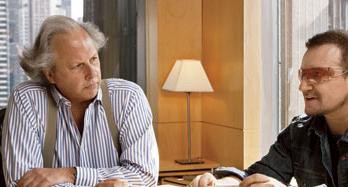
We are living in a weird time of magazine editor’s letters! The April GQ editor’s letter from Jim Nelson decries the Johnny-come-latelies of people caring about the Middle East. (“And Yemen Would Be… Where Exactly?”) You tell ’em, buddy. And now, in his May issue, Vanity Fair’s Graydon Carter goes big, trashing Bravo’s Andy Cohen and CNBC host Larry Kudlow (“prime examples of the danger of trying to live in your own socio-economic comfort bubble and wanting to have a public voice at the same time”) and then goes hog-wild on the subject of economic inequality — on the “danger of leaving overwhelming wealth and power in the grasp of a small minority.” This is unexpected! (And it seems a little like EW writing an attack on the celebrity industrial complex? Which, please let them never do!) Meanwhile, the April’s Town and Country brings editor Stephen Drucker’s farewell letter; his chair is being given to Jay Fielden. And also, he writes: “We’re privileged this month to visit the Lyford Cay Club, the easy-chic private community in the Bahamas that’s the essence of the Town & Country life.” (There’s also a spread on “The Women of Santa Barbara.” Yes, all of them! Kidding, just seven of them, including Baroness Léni Fé Bland.) Phew! It’s so reassuring to find the expected.
LIVEBLOG: The Cobra Capture Press Conference

The 20-inch-long Egyptian cobra who had been on the loose since Friday has now been caught! There is a press conference scheduled for 4pm (which will be streamed live on 7online.com) that will hopefully give more details. Before we liveblog, here’s what we know so far.
• “Officials described the outcome of the six day search as ‘positive.’” — ABC 7
• “The sassy snake, @BronxZoosCobra, has not commented on its reported capture.” — NBC New York
• “gotz to go drain da snake, or az i callz him my 20” long bronx cobra!” — @wrongronniemund
— –
3:50 — Watching NY1 hoping that there’s some pre-press conference coverage. Nothing yet. They are helping me start my weekend early though. Sounds like there’s a cool thing happening at the Kimmel Gallery about faces of Ethiopia. Cool stuff!
3:55 — Wow, everyone who won the lottery is getting $19 million each, that’s still probably $8 million after taxes. That’s crazy. More importantly though, I’m trying to find out if ABC will preempt Oprah to air the press conference. I called Oprah, no word back yet.
4:02 — Oprah is still on. Presser isn’t on NY1, but it’s still streaming online.
OH SHIT. Someone just knocked over the camera that ABC is using to stream here. Static everywhere.
4:03 — Okay, close one. It’s back now.
4:05 — This woman is wearing fleece. That makes me trust her and her knowledge of reptile matters.
4:06 — Too bad she’s passing it off to some guy named Jim.
4:07 — FOUND IN THE REPTILE HOUSE. “The key was patience… So that she would feel secure and come out… Resting comfortably… When they’re sure she’s in good condition, we will put her back out on exhibit.”
4:08 — They always knew the snake was in the place and just had to make her “comfortable” to come out. Seems like they had it all under control, much moreso than what my imagination and what I read on the fake Twitter had led me to believe.
4:09 — These guys are sneaky, used wood chips that SMELLED like mice and rats to lure her out. Jim seems like a chill dude though.
4:10 — Asked about the Twitter account, Jim was happy that it was lighthearted, took it as a sign that people believed in him and his team. Did not read it to avoid distraction. I would trust Jim with my life. He also has a mustache and a jacket that makes swish-y noises.
4:11 — “Snakes are shy, secretive creatures. Venom is used not as defense but only to hunt food.”
4:12 — Jim keeps calling the snake “the snake”, seems rude.
4:12 — I SPOKE TOO SOON, THE SNAKE HAS NO NAME. THERE MAY BE A SNAKE NAMING CONTEST SOON.
4:14 — The snake was captured at 9am. What have they been doing since then?
4:14 — Jim just described the size of the snake as, “that long” but the camera was not on him but on his team.
4:16 — These reporters are being sort of dicks to Jim. They’re questioning where she was being kept before she escaped out of her holding cage. It seems like they are trying to pin this on him, when it seems like it was a simple mistake anyone could have made, and the snake was just hiding out in some corner. Chill out reporters! Jim’s doing his best here!
4:17 — “Well it’s been getting more publicity than Charlie Sheen…” — NY1 anchor as they wrap up the press conference. Lol, topical.
4:18 — Welp, I guess this is over! Everyone back to complaining about the weather! (Apparently there’s supposed to be some sort of wintry mix tonight? It’s crazy!)
Your Gut Will Make You Go Blind
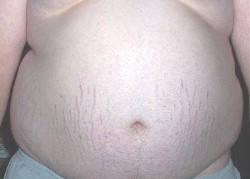
Bad news, fellas: “Piling on the pounds in middle-age could significantly increase a man’s risk of blindness later in life, according to new research. Scientists found an expanding waistline puts men in danger of developing age-related macular degeneration…. Australian researchers who carried out the study said even small changes in a man’s waist size can raise the risk of getting AMD by up to 75 per cent. However, women do not seem to be affected.” Researchers recommend avoiding red meat and eating a diet centered more around chicken and vegetables and nuts and other incredibly boring foods that have no flavor and make you hate life and wish you were blind, so at the very least you wouldn’t have to see your massive gut anymore. We all have to make trade-offs in this life. Except women, apparently.
Will Fenway Fans Be Able To Enjoy A Martini As They Take In The Game?
Will the lower orders at Boston’s Fenway Park soon be able to avail themselves of the same mixed drink their better-paying fellow baseball fans enjoy? “Representatives of the Red Sox told the Boston Licensing Board last week that the team wants the right to sell mixed drinks, in addition to beer, ‘at a limited number of stations’ throughout the 37,000-seat stadium and on Yawkey Way. Currently, hard liquor is available mainly at refreshment stands serving fans with upper-level premium seats.” Boston’s mayor and its constabulary seem perturbed by the proposal, which makes sense when you consider how unpleasant even those most sober Red Sox supporter can be. Still, not to worry: “At the hearing last week, Red Sox officials said the mixed drinks available to fans in general seating areas would contain no more alcohol than the beer that is currently sold.” The SAME AMOUNT AS THE BEER? Forget it! Sully’s not messing around with some watery-ass Jack and Ginger when he can get drunk just as easily with those fancy new upside-down kegs. Oh, also, happy Opening Day, everyone!
Cat With Lawn-Mower Purr Goes For Guinness World Record
I this the loudest-purring cat in the world? Smokey, who is 12 years old and lives in the English town of Pitsford, emits sounds of pleasure that have been recorded at 73 decibels, which is 16-times louder than the average cat’s purr. Nearby Northhampton College has submitted scientific evidence and witness verification of Smokey’s volume to the Guinness World Records organization. We all await an official verdict.
Quit Your Job! Jen St. Hilaire of Scarlet City Coffee Roasting
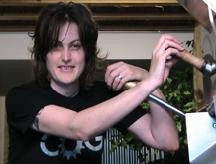
There’s more than one way to start a business. You can straight up just quit your job, and take loans and go for broke — but that’s not something we’re all in a position to do. There are ways to segue into proprietorship, supporting yourself part-time while you grow a business. We talked to our favorite coffee roaster, Jen St. Hilaire, of Scarlet City Coffee Roasting, who is based in California’s East Bay and makes our favorite coffee ever, about how and why she’s doing it.
The Awl: Why is your coffee so insanely delicious? I swear, this is the best coffee I’ve ever had in my entire life. Like I want to drink it all day and night.
Jen St. Hilaire: Because… Resistance is Futile! No, but seriously, I’m glad you like my coffee! And I always appreciate hearing people’s feedback. There are few things that I think contribute to the way my coffees taste. My roast style and personal tastes are the most obvious things. I roast the beans in a medium or Northern Italian style, which highlights the sugars and flavors of origin naturally present in the coffee, because they aren’t overridden by the roast style, as they tend to be in coffees that are dark/overroasted (bitter flavors) or light/underroasted (acidic, bright, sour flavors). I think coffee tastes best when all of those flavors (bright, bitter, sweet) are in balance. My personal taste comes into play primarily in my blend creation. I prefer coffees with flavors of dark chocolate, caramel, brown sugar, maybe a little spice or fruit. So the coffees I select for the components in my blends will usually have one or more of these characteristics which contributes to the blend. For my single origin coffees, my criteria is a little different in that I choose coffees from women-owned/milled/exported farms, regardless of whether they fit my personal preference, but all of them have to be of very high quality.
I try to buy organic when I can, but the way a coffee tastes is always first priority. Both my personal taste and roast style aside, I think what really makes my coffees different from other roasters with similar style & taste is the expertise that I’ve developed over the 16 years in the industry while working for companies like Espresso Vivace and Ecco Caffe. Doing something really well takes practice, even if you initially have a talent and passion for it. There was a study mentioned in one of Malcolm Gladwell’s books, Outliers, that collected data about musicians at different skill levels and how many hours of practice they’d put in over the years, to determine whether there was such a thing as “innate talent.” Turns out, the study found that musicians who had put in roughly 10,000 hours or more into their field had all reached a level of mastery that the others hadn’t achieved, regardless of how talented they had all been when they started. 10,000 hours correlates to about 10 years’ time… so, scientifically speaking, it’s possible that my coffee simply tastes really good because I’ve put in so many hours of practice. When it all comes down to it though, I do think there’s an unexplainable element of “magic” that happens when someone is doing something they love.
The Awl: You’re in a long transition from being a roaster at other companies, to being a consultant roaster, to being a small business operator, so now you have to handle all those pesky things. Why’d ya do it? And why that choice? It’s nice and safe being an employee, after all.
That’s true, it is nice and safe being an employee, especially when you’re younger, or you’re not able to or interested in taking such big risks with your career and your money. But working for others was also a necessary part of gaining the experience to become a good business owner. I was lucky enough to start off with one of the best educations in specialty coffee roasting that one could get in the mid 90s — as Vivace’s first wholesale manager & head roaster. People traveled from all over the world to our roasteria on Capitol Hill, to see this new-fangled thing called “latte art” and to get a taste of the coffee that was as delicious as it smelled. I learned a lot about roasting and espresso preparation, and specifically, how to tweak my roasts on each of the coffees to contribute just the right flavors to the espresso blends.
I also learned all about the nuts and bolts of running a wholesale roasting business — bean selection & buying, vendor relations, accounting, shipping, systems set up. Later on, when I moved down to the Bay Area, I got to work with long-time Vivace wholesale customer, Andy Barnett, while he was starting Ecco — training him how to roast and consulting with him on his wholesale program, and I learned a lot about the process starting a roasting company from scratch. After Ecco was set up, I roasted there for several years when Andy was away at barista competitions or in Brazil, and then around 2006–07, I began the process of building my own company.
Prior to 2006, I had actually hoped to find full-time work here in California as a coffee roaster at someone else’s company, but for various reasons, that plan never panned out, so I literally *had* to start my own company to be able to make roasting into a career. One of the other reasons I wanted to start my own business is that I wanted to have complete control over what I was doing. Good or bad jobs aside, I’ve always felt a little dissatisfied at not having the authority to make decisions that I knew could have made the product better or the job easier and more efficient. As lucky as I’ve been to have interesting jobs with some autonomy (currently I still work part-time at UC Berkeley managing a zebrafish research facility, I’ve worked on crab & fish processors in Alaska, at Good Vibrations, at Lonely Planet, and various juice companies like Genesis, Dharma Juice & Odwalla), I always wanted to have a career doing something I absolutely, without question, loved and would never grow bored of — and something creative. It’s not without its risks, as you mentioned — but that’s part of why it’s exciting for me: important decisions come up all the time, things that could make or break my business. But I get to own all the successes, along with the failures, and feels really satisfying to have maneuvered what could have been a failure into a success. And that’s the kind of thing that, at the end of a long, long, long, endless, work week, makes my journey totally worth it.
The Awl: How important is the Internet to your business? You have “pickup available” once a week from your funny shared warehouse down in West Oakland, near where the military hogs the waterfront — and then the rest is wholesale deliveries and individual online orders. How much of your life is about distribution?
The Internet is totally key for growing my business right now, since I don’t have a retail storefront yet, and direct sales are where I want to focus, since the profit margins are a lot bigger and I really like being able to give personalized customer service to people who choose to buy coffee from my company. I only have two small wholesale accounts right now, and they’re pretty close to where I live, so they’re not too much for me to handle yet. But there’s another grocery store account in the works, with three more stores, so I’m in the process of figuring out how that’ll fit into my schedule without too much trouble. My life might become all about distribution in a hot second!
The Awl: What are your biggest challenges? Is it bricks and mortar-related — like, storage and inventory? Or distribution? Or getting bigger wholesale clients, or more individual orders — or getting enough roasting time?
The biggest challenge right now is just trying to keep my business afloat, and that includes all the areas you mentioned. The economy is pretty bad right now, and with the “c” coffee market prices at an all-time high, I’ve been paying almost 200% more per pound for green beans than I was just a year ago. Many of the roasters in the Bay Area with a similar product (fresh, medium roast, high quality coffees) have raised their prices over the last year to $1–2 per pound more than what I’m currently selling my beans for. I’ve raised my prices a little bit, but because I’m still such a new company, I can’t risk raising them too high or I risk alienating first-time customers who may not want to take a chance paying a little more for beans from a company that they’ve never heard of or been able to taste in a shop. Brokers aren’t keeping a whole lot of inventory on hand right now because the market is so volatile, so it makes it a little bit trickier for me to get the beans I want, and I have to stay several steps ahead with my green bean purchases to make sure I’ve got enough in stock.
Then there’s the bricks and mortar challenge of being able to pay the rent on the warehouse every month, which is about 90% of my overhead. I’m currently still supplementing a lot of my expenses with my paycheck from UCB, but hopefully, that’ll change at some point.
The Awl: What do you wish you’d known before you struck out on your own?
Well.. for one, I wish I would have known that when shopping for loans, the banks don’t really care about anything in your business plan besides your executive summary, your investments and your financial projections. Though I’m really glad I spent the time to research and fill out the sections like “SWOT Analysis,” I probably could have shaved a lot of time off writing my plan if I’d been a little less meticulous about everything in it.
Germs Never Sleep
The great hand-drying debate may have been resolved but there is still more disturbing news for those of you who fear the germs: Automatic faucets — the kind where you put your hand under the spout and water is supposed to come out (but rarely does) — are dirtier than manual faucets, and may give you Legionnaire’s disease. Also, the dish towels in your very home are full of E. coli and listeria. There is no escape! Just figure you’re going to spend some time near the toilet, which, I don’t need to tell you, is probably crawling with grime.
College Admit Rate Plummets: Big Money College Bonanza Time!
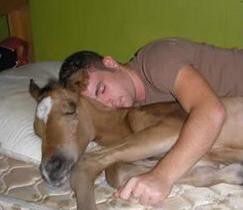
Good news for America’s money-hungry colleges and universities! Yale: “Class of 2015 admit rate lowest ever.” UCLA: “A record-high number of applicants for UCLA results in low admissions.” Harvard: “Harvard Accepts Record Low 6.2 Percent of Applicants to the Class of 2015.”
So, yes: application rates are through the roof, admission rates are way down, and at the same time, prices are going up! Coupled with the trend of the use of high-priced admissions “consultants,” who help eliminate admissions to needy (“poor”) students so as to get more paying students, it’s going to be a great year for institutions (to sock away some cash and educate the coming oligarchy).
My Chemical Romance, "Common People"
Um, here are My Chemical Romance — a band that formed a decade ago, by the way, which makes everybody OLD — covering Pulp’s “Common People” at the BBC. It’s not embeddable, so click through if this is something that, for some reason, you’d like to hear.
What You Should Eat For Lunch Today
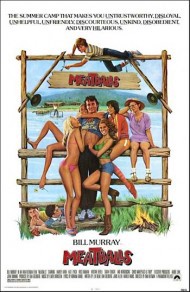
Here’s a suggestion for lunch: Go to the Meatball Shop on Stanton Street and Allen Street on the Lower East Side. (If you don’t live in New York City, leave now, and you can make it for tomorrow’s lunch.) Go alone, as the place is very popular and there will be a line out the door (even at lunchtime!) waiting for tables of two or four, but single patrons can slip onto an open stool between two other people at the bar. Bring something to read — this week’s New Yorker magazine is good — as the servers will be busy and take a little while to get to you. When they do get to you, order the “Kitchen Sink” plate, which is three meatballs of your choice in a sauce of your choice over greens with roasted vegetables on the side. The vegetables this week will be braised cabbage with big mustard seeds that pop between your teeth, and roasted beets and chick peas. The greens will be arugula. Get the chicken meat balls with the “classic” tomato sauce. You may be surprised to enjoy the chicken meat balls more than the spicy pork ones you’ve had there before, if you’ve been there before and had the spicy pork meatballs.
For this delicious plate of food you will pay the amazingly low price of eight dollars. Nine, if you get it with “the family jewels,” which is the restaurant’s funny way of saying “with a fried egg on top.” (And which, by all means, you should — because what doesn’t taste better with a fried egg on top? Mint chocolate-chip ice-cream, maybe, and I can’t think of anything else.) Many, many restaurants in New York charge more than nine dollars for salads very similar to the “Kitchen Sink” without any meatballs on top.
With the money you’ll save, order a glass of wine — which will feel like an absolute necessity if you’re being forced to vacate your apartment from 8 a.m. to 5 p.m. because your building management has scheduled this as the day when they send a crew of workmen to wrap your hallway in translucent blue plastic like the end of E.T. while they remove the asbestos tiles that have most likely been poisoning you and your family for the past nine years. Try not to think about that as you enjoy your meatballs and glass of wine. Try the Sangiovese, it’s nice.
And while you’re sitting there by yourself, eating this great meal and trying not to think about cancer and wondering what coffee shop or bar you’ll find shelter in for the next few hours, you should read the David Grann story in the New Yorker about the 2007 murder of a prominent Guatemalan lawyer named Rodrigo Rosenberg. (You know, subscription required and all.) It starts with the sentence “Rodrigo Rosenberg knew that he was about to die.” And he totally did, and there’s a stunning story behind it — one about the incredible violence and political corruption that has been plaguing Guatemala for years. It’s very, very long, but worth the time it takes to read. David Grann tells these kinds of stories as well as anybody I know of these days.
Previously: How You Can Make The Most Delicious Sandwich In New York City
